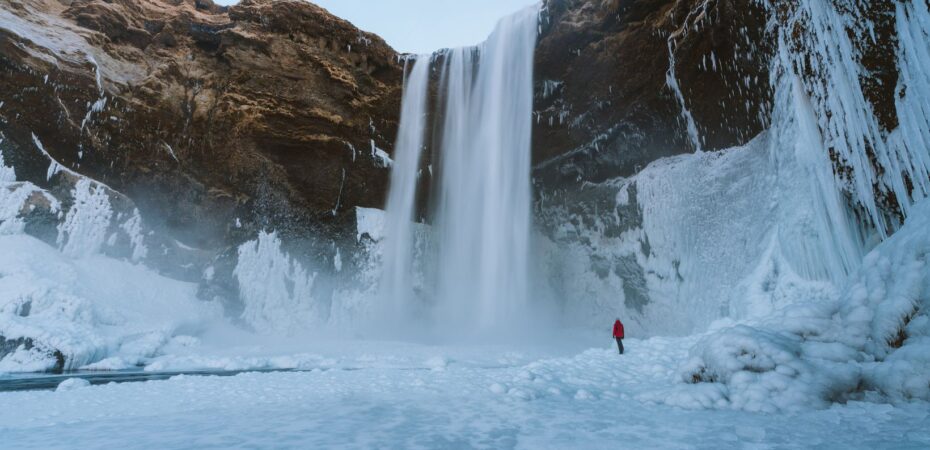Iceland is an unforgiving island. High winds, snow, and at times, limited visibility. While it’s surprisingly warm for its latitude, you can expect averages of -10°C in certain parts of the island. Packing for a testing environment like Iceland is going to take some careful planning…
Clothing
Your layering system must start with a merino wool base, it’s undoubtedly the go-to material because it repels water. Something many don’t understand in these climates is that you’re also in danger of sweating when walking up hills with thick coats on. And, if you sweat, you’re in real trouble.
The way to avoid this is by having many layers, and the middle layer will be all about insulation. Wool is the way to go again, but this is more flexible. Softshells are fine, as are your typical Patagonia fleeces, though they’re of synthetic and less breathable. This is the least important layer.
Your outer shell must have a minimum 20,000mm waterproof rating with fully taped seams – anything less fails against Iceland’s horizontal rain. Breathability is also worth consideration here.
Avoid cotton entirely as it creates a hypothermia risk when wet. If backpacking, stick to just one or two mid-layers. For those using a 4×4 camper rental in Iceland, you can be more liberal with what to pack for Iceland in winter.
Accessories
When looking at what to wear in Iceland in winter, your glove system could come in three parts: silk liner gloves to maintain dexterity for camera controls, insulated mittens for maximum warmth (e.g., midnight aurora tours), and waterproof shells to protect against wind and precipitation. Neck protection is important (snoods), and wind-resistant ear coverage is a personal preference – a beanie with the hood up is usually okay. Chemical hand warmers aren’t always necessary but can be pleasant – as are the shoe sole options!
Shoes

Insulation ratings indicate temperature thresholds, with -40°C boots being for stationary activities. Standing still is where you get most cold, so -20°C suffices for hiking. Your waterproofing needs exceed the urban requirements: glacier approaches demand full submersion protection, not just splash resistance. Boot height should correlate with snow depth, meaning mid-calf is a minimum for backcountry travel.
Electronics
It’s important to remember that Lithium-ion batteries lose 20% capacity per 10°C temperature drop, so keep spares warm against your body core. Power bank capacity of over 20,000mAh is needed for multi-day photography sessions. Camera is also a problem, so sealed bags with silica gel can prevent lens fogging when moving between heated vehicles and the outdoors.
Smartphone screens can become unresponsive below -15°C, so bear this in mind – only certain gloves allow touch. Headlamp LED efficiency decreases in extreme cold but red modes preserve night vision during aurora photography.
Useful things
Within your Iceland winter packing list, emergency bivvy sacks reflect 90% body heat but they do create a condensation problem, so be mindful. Being able to recognise hypothermia early on is super important – these are subtle cognitive changes like confusion and slurred speech.
Multi-tools and a medical kits need specific features like a saw blade for emergency shelter construction, awl for crampon strap repair, scissors for medical applications. Paracord rated for 550-pound loads handles vehicle recovery (very important in case your vehicle breaks down), and emergency food stored in the car too of around 4,000 calories per person, which will give you a full night and day to seek help. Water purification tablets are also worth bringing.
The Iceland packing list winter isn’t something to improvise at the last moment – it takes weeks of planning and accumulating the right stuff.


 By
By 




